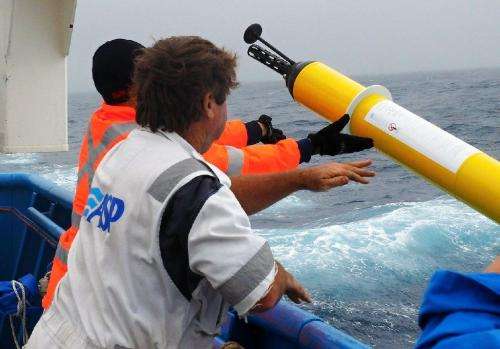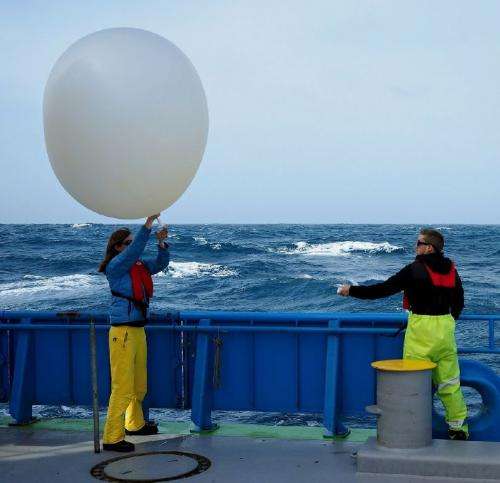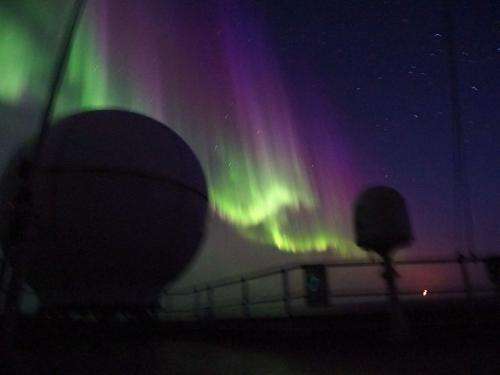Ocean research vessel returns from the ice edge with first-of-its-kind atmospheric measurements

Scientists have commissioned Australia's first permanent ship-based labs to study the influence of both natural ocean emissions and human emissions on the composition of air over the Southern Ocean.
The research will generate the most complete picture of the atmosphere over the Southern Ocean to date, and improve our ability to predict future changes to Australian weather and climate by measuring the smallest of atmospheric particles - with a diameter less than a thousandth of a human hair - which have a profound influence on both human health and climate.
Scientists from QUT, the University of Melbourne, CSIRO and University of Wollongong were on board CSIRO's new $120 million research vessel Investigator, which has just returned to Australia from Antarctica's ice edge (65 degrees south) after testing how the vessel and its systems performed in frigid water temperatures.
"Aerosols are tiny particles suspended in the air which cloud and fog droplets cling to - without aerosols, clouds and fog simply cannot form," said QUT Institute for Future Environments researcher Professor Zoran Ristovski, who helped design and test the labs.
"Clouds play a big part in climate modelling due to their ability to reflect incoming sunlight back into space.
"The Southern Ocean is a key driver for Australia's climate and weather - understanding more about the atmosphere in this part of the world will allow us to create far more accurate climate models for this region."

The Aerosol Laboratory contains specialised equipment to measure even the smallest of particles, less than one nanometre - a billionth of a metre - in diameter, while the Atmospheric Chemistry Laboratory contains instruments to analyse the composition of the atmosphere in detail, including trace amounts of gasses from human activities.
Dr Robyn Schofield from the University of Melbourne's School of Earth Sciences led a team that launched 10 meteorological balloons from the ship, in the demanding conditions of the Southern Ocean.
"We used this voyage, in part, to plan for future scientific voyages that will be examining storm fronts over the Southern Ocean," Dr Schofield said.
"Being so far from populated areas, atmospheric data collection in the Southern Ocean to date has been difficult and these labs will make a real difference to the quality of observations to test our climate models.
"Our politicians depend on accurate climate models to make good decisions about our future.

"The unique data sets these laboratories will provide will give the most complete picture of the atmosphere over the Southern Ocean and significantly improve our ability to predict future changes to Australian weather and climate."
Atmospheric research scientist Dr Melita Keywood, from CSIRO's Oceans and Atmosphere Flagship, said the equipment in the laboratories performed above expectations.
"The instruments ran extremely well during the voyage, and we collected some really interesting data which show us the influence of both natural ocean emissions and of human emissions on the composition of air over the Southern Ocean," Dr Keywood said.
"The Aerosol Laboratory is located in the ship's bow, underneath the mast to minimise any sampling losses. We weren't sure how its instruments would cope in 10-metre waves until we tried it."
Investigator is a 94-metre purpose-built research vessel, capable of travelling 60,000 nautical miles in a single voyage, carrying up to 40 scientists and support staff, from the equator to the Antarctic ice-edge.
Provided by Queensland University of Technology



















